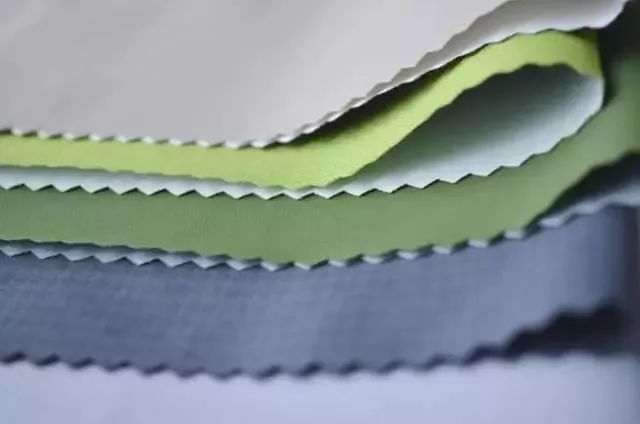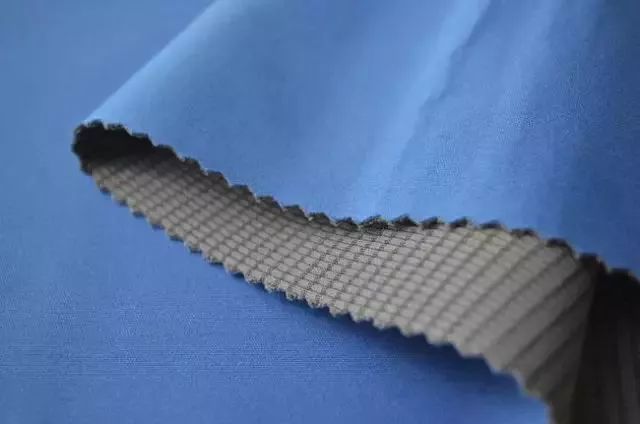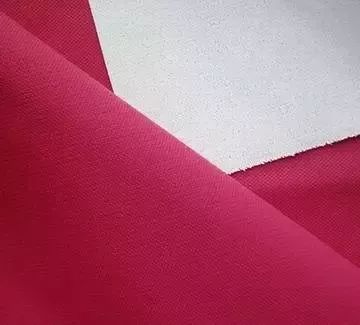Introduction and difference between coated fabrics and composite fabrics
[Coated fabrics]
Coated fabrics are fabrics (or non-woven fabrics) ), covered with a layer of polymer or other materials to form a composite of fabric and polymer.
The coated fabric uses solvent or water to dissolve the required coating particles (including PU glue, A/C glue, PVC, PE glue) into a saliva-like shape, and then in a certain way (Rotary screen, scraper or roller) is evenly applied on the fabric (including cotton, polyester, nylon and other base materials), and then fixed by the temperature in the oven to form a uniform layer of covering glue on the surface of the fabric.

【Composite fabrics】
Composite fabrics can be understood as different components, different tissues or different dyes The whole process is a new fabric in which two (or more) fabrics are organized together through a special process.
Composite fabrics use “new synthetic fiber” high technology and new materials, and have many excellent properties (compared with ordinary synthetic fibers), such as fabrics that are clean, delicate, elegant, and warm. It has a plump appearance, is windproof, breathable, and has a certain waterproof function.

Its main features are warmth and good breathability.
Another feature of this fabric is that it has good abrasion resistance. Microfiber fabrics are soft to the touch, breathable, and moisture-permeable, so they have obvious advantages in terms of touch and physiological comfort. Microfiber fabrics The wrinkle resistance of microfiber fabrics is poor (this is due to the soft fiber and poor elastic recovery after wrinkles); in order to overcome this shortcoming, a “composite” process is adopted, which greatly improves the shortcomings of poor wrinkle resistance of microfiber fabrics. Composite fabric is a popular outerwear fabric in Europe and America.
Another feature of this fabric is that it has good abrasion resistance. Microfiber fabrics are soft to the touch, breathable, and moisture-permeable, so they have obvious advantages in terms of touch and physiological comfort. Microfiber fabrics The wrinkle resistance of microfiber fabrics is poor (this is due to the soft fiber and poor elastic recovery after wrinkles); in order to overcome this shortcoming, a “composite” process is adopted, which greatly improves the shortcomings of poor wrinkle resistance of microfiber fabrics. Composite fabric is a popular outerwear fabric in Europe and America.
Classification of composite fabrics
1. Lamination of woven fabrics and knitted fabrics
2. Lamination of knitted fabrics and knitted fabrics
3 .Woven fabric and woven fabric composite
Sports and leisure clothing uses knitted fabric composite knitted fabric, which has the effect of woven fabric and good elasticity, so in the eyes of consumers of this type of clothing , is still relatively popular and loved by the public.

Ordinary composite fabrics
The fabric and lining are bonded with an adhesive to improve the texture of the fabric. Suitable for process simplification and large-scale production of clothing processing.
Functional composite fabrics
The composite fabrics have special functions such as waterproof, moisture-permeable, radiation resistance, washing resistance, and wear resistance.
Process flow
There are six internationally popular composite processes, namely hot sol powder dot coating composite process, hot sol slurry dot composite process, hot sol dusting composite process, and thermal sol powder dot composite process. Fabrics compounded by sol double-point compounding technology, polyurethane spray compounding technology, and polyurethane roller coating compounding technology are a new type of fabric developed by the market. In short, they are two fabrics compounded together. . In the past, the most common composite was the composite of suede fabric and wool. Nowadays, any fabric can be used to composite it together. The door width of composite fabrics is limited to the size of the two fabrics before they are combined, which can generally reach 145CM. Each batch of composite fabrics must be effectively maintained and treated. First, the reverse fabric is laminated (the film is a transparent material similar to a nylon film), bonded with chemical materials, and then maintained.
The longer the maintenance treatment, the better the bonding fastness to the fabric and the degree of fusion of the adhesive. Generally, domestic adhesives require three days of maintenance, and imported adhesives require five days. time or longer.
The time required for the adhesive to fully integrate into the space between the fabric and the membrane will also affect the subsequent bonding effect with the front fabric.






